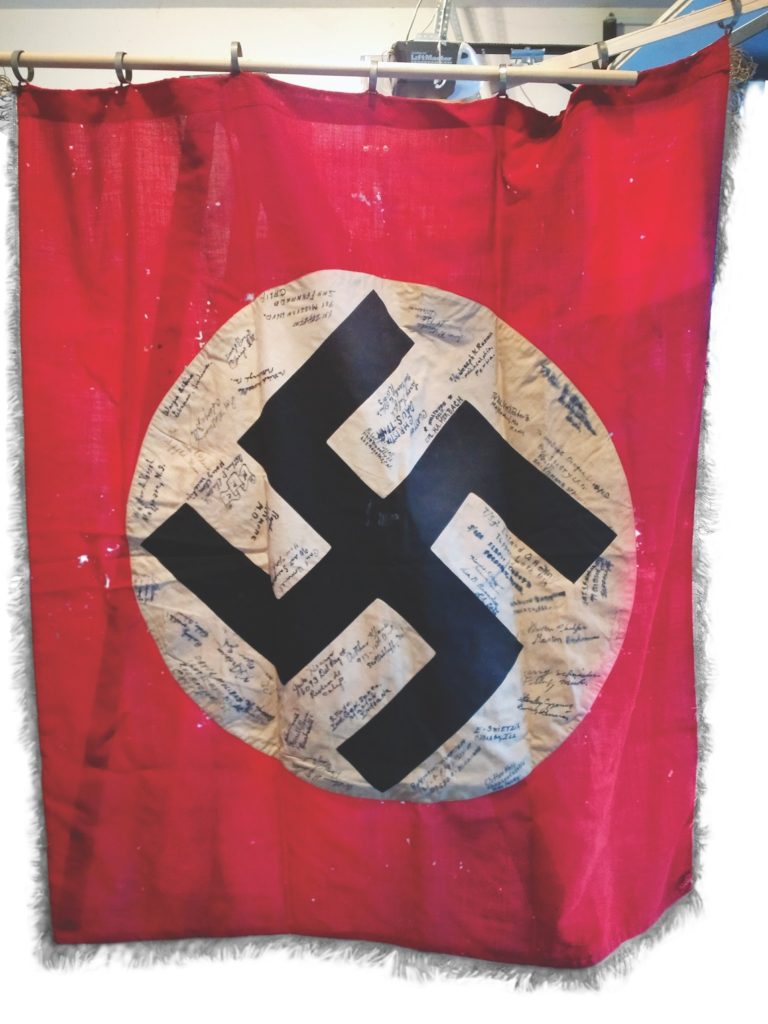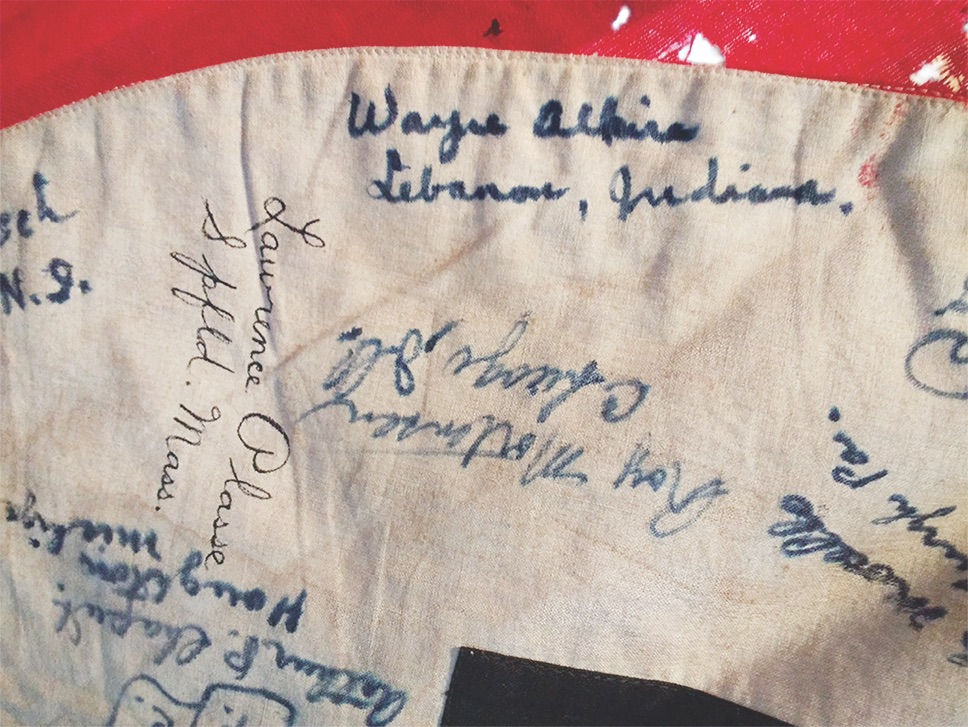Curators at The National World War II Museum solve readers’ artifact mysteries.
Question: My father, Joseph Troiano, fought in Europe and came back with a souvenir I’m very curious about: a Nazi flag signed by about two dozen fellow soldiers—although not him. The flag had rings at the top, as if it had hung from a pole or curtain rod. He never spoke about the war or his experiences. Is this something that should be in a museum? I would love to find out whatever I can. —Jean Leslie, New Bern, N.C.
Nazi flags are probably the most common souvenir American servicemen and women brought home from the war. They range from gigantic single-sided banners meant to hang from buildings, to flags intended for flagpoles, to those with grommets at all four corners intended for vehicle identification, to standards meant to be carried in parades. Most museums, including The National WWII Museum, already have all the plain Nazi flags they can care for—but signed flags like this one are unique items. They represent a moment when servicemen turned a symbol of hate into a symbol of victory. With their signatures, these men commemorated their win in Europe and the camaraderie of their unit. The National WWII Museum would be honored to accept flags signed by servicemen or women during the war into its collection.
Now, what do we know about this flag? It was of the type designed to be carried in parades on a pole, as was commonly used by assault divisions of the Nazi Party, like the SA. We know that because of the rings on the “fly edge,” the fringe, and a bright rectangular area near the rings that once held the unit’s designation (visible here on the flag’s top right corner). I expect that your father found this flag and asked his comrades to sign it. That would explain both why he took it home and why he didn’t sign it: who, for example, signs their own yearbook? Many of the names are difficult to read. I did search for a few that were clear but had little success in finding any concrete information that appeared to match with certainty—and, unfortunately, most of that information was found in obituaries. That is, of course, why it is so important to collect your families’ stories while you can. Overall, a very intriguing souvenir. ✯

—Tom Czekanski, senior curator and restoration manager
Have a World War II artifact you can’t identify?
Write to Footlocker@historynet.com with the following:
— Your connection to the object and what you know about it.
— The object’s dimensions, in inches.
— Several high-resolution digital photos taken close up and from varying angles.
— Pictures should be in color, and at least 300 dpi.
Unfortunately, we can’t respond to every query, nor can we appraise value.
This article was published in the February 2021 issue of World War II.






